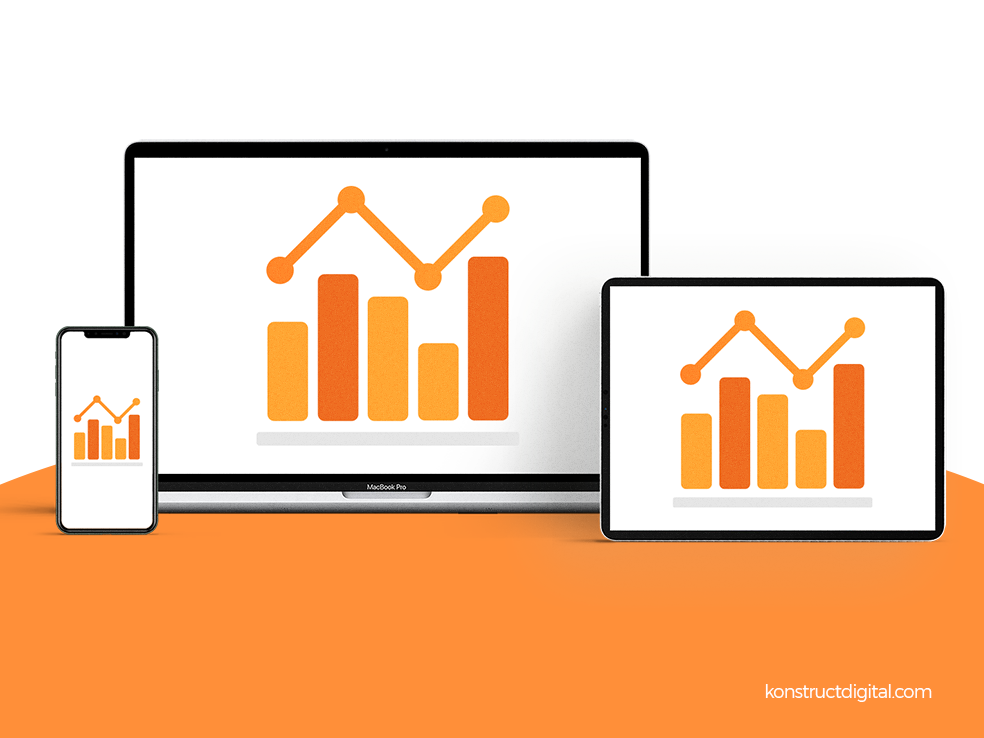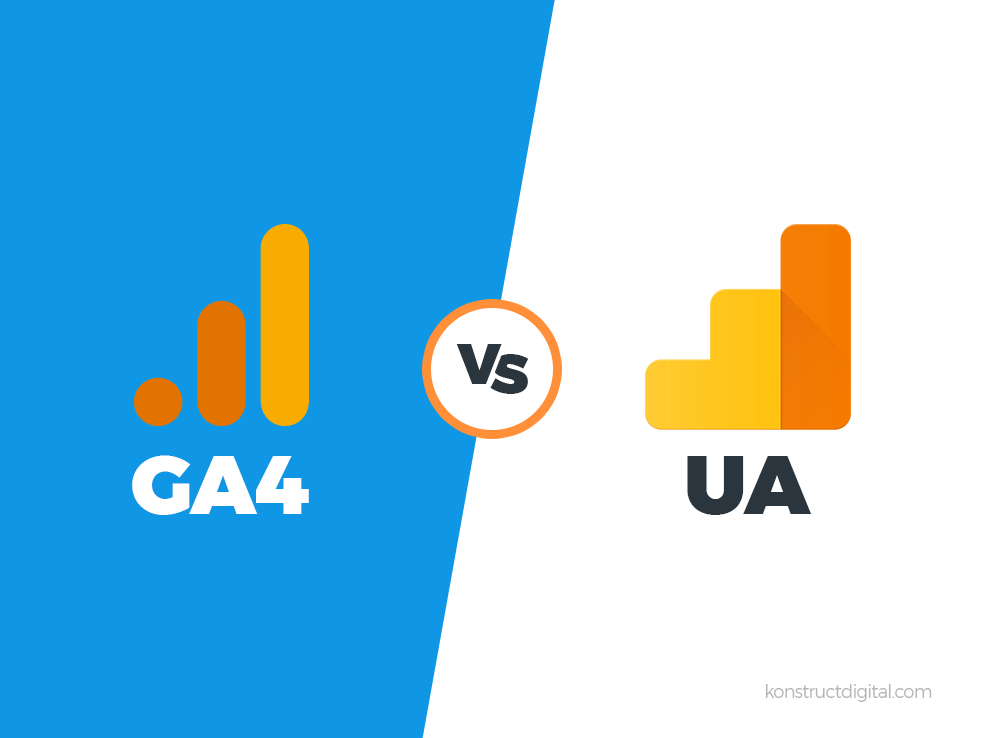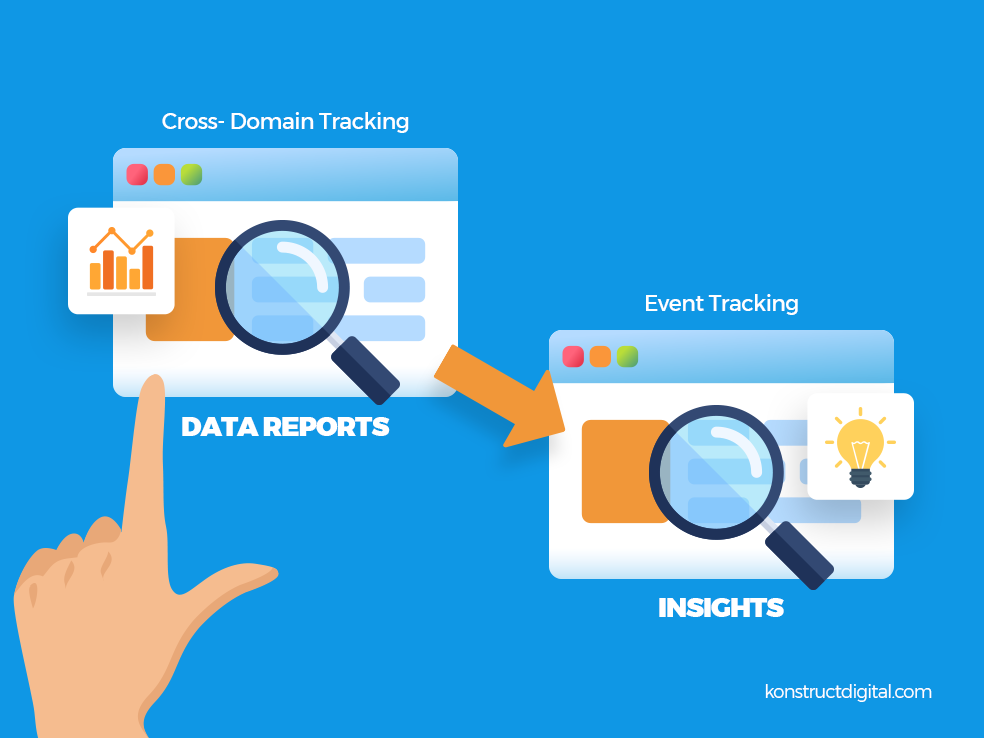Google’s Universal Analytics platform has reigned as the king of providing insights into customer data and behaviour for years and is one of the main tools in any successful digital marketer’s repertoire for improving their online presence and audience targeting. However, with the recent release of Universal Analytics successor Analytics 4, there may just be a new king on the throne – so is it time you made the transition to GA4?
What is Google Analytics 4?
If you’re reading this, the odds are that you’re already familiar with Google’s Universal Analytics and maybe looking for more information on the new kid on the analytics block. GA4 (Google Analytics 4) is Googles’ newest generation of analytics and tracking software. Referring to GA4 as a “new type of property”, Google’s latest iteration of Analytics allows for more tracking and reporting options than ever before. One of the key features differentiating GA4 from its predecessor UA (Universal Analytics) is the ability to not only use it for a website, but also an app, or both together – allowing for tracking capabilities that are unlike anything previously available.
Google Analytics originally launched on November 14, 2005, as a truly revolutionary step forward in the analytics industry. The service was offered at no cost which was nearly unheard of at the time. This new service under the Google umbrella proved to be so popular that new signups were discontinued only a week after its initial launch due to overwhelming demand.
Since then Google Analytics has remained at the forefront of providing analytics data to users around the world. In 2012 Google provided the last official update on the number of users utilizing Google Analytics, stating that there were more than 10 million users, that number is now projected to be within the range of 30-50 million or an estimated 55% of all websites.
Universal Analytics was the second iteration of Google Analytics, released in 2012. The key differences from the previous versions were: cross-platform tracking, flexible tracking code to collect data from any device, and the introduction of custom dimensions and custom metrics.
In March 2016, Google released Google Analytics 360, which includes seven main products: Analytics, Tag Manager, Optimize, Data Studio, Surveys, Attribution, and Audience Center. In October 2017 a new version of Google Analytics was announced, called Global Site Tag. Its stated purpose was to unify the tagging system to simplify implementation. In June 2018, Google introduced Google Marketing Platform, an online advertisement and analytics brand. It consists of two former brands of Google, DoubleClick Digital Marketing and Google Analytics 360.
With its newest iteration, GA4 has improved upon the framework already laid out through Universal Analytics and will soon become the default when it comes to analytics tracking across the web.
The Advantages of Google Analytics 4

Google Analytics has been steadily improving since its initial inception and the introduction of GA4 continues this trend of continual improvement. The new Google Analytics 4 advantages allows for a more complete cross-channel view of a customer’s journey and stands out from Universal Analytics with its new data model, ability to combine mobile app and web data, analysis tools, audience management features, and changes made to address fluctuations of privacy policies, browser updates, and cookies.
Smarter Insights
Google’s latest advanced machine learning models allow GA4 properties to monitor trends and take advantage of smarter insights than ever before. Automated insights provided within Google Analytics 4 are generated automatically using these advanced machine learning algorithms whenever GA4 detects unusual changes, spikes, or differences in particular data trends.
These algorithms are constantly evolving and always working behind the scenes of GA4 properties to provide these automatically generated insights which provide more useful data than in any other generation of Google Analytics
Integrated Event Tracking
Realizing the importance of event tracking, Google has adjusted how events are tracked in GA4. By default, events are not tracked within Universal Analytics (Google Tag Manager is required), if you want to track important statistics such as user scroll depth, video plays, or link clicks you would have to implement this tracking manually. Now with GA4, these items are automatically tracked without the need for manual event tracking to be set up.
Prior to Google Analytics 4, events were used as a way to track actions occurring across your website. If you were looking to track the number of times customers clicked a link or downloaded a file, you would use event tracking and event reports to follow these metrics.
Event tracking has been shaken up in GA4. Now, events are used to send data to your custom reports – including actions, website info, and details about website visitors. Within Universal Analytics, data was always sent as a ‘hit’. And there were predefined types of hits you could send, which meant that you were out of luck if you wanted to collect custom information that didn’t match one of the predefined hit types.
Hits are replaced by events in Google Analytics 4, which means you can collect data for anything you like. You’re no longer restricted to these predefined options.
Automated Cross-domain Tracking
Within Universal Analytics cross-domain tracking can be configured in a few different ways – most of which is done either on the code level, for example in gtag.js, or within Google Tag Manager. Because tracking could be set up in multiple ways, it could often lead to confusion about what to do and where to do it – Google Analytics 4 seeks to make setting up cross-domain tracking much easier.
So how exactly does cross-domain tracking work? Google Analytics tracks users with what is known as first-party cookies, whenever a user lands on your website GA stores one of these cookies in the visitor’s browser, then as they navigate from page A to page B of your website GA checks the values of that cookie allowing it to understand that this is the same user from page A, and therefore the views on page B should be included in the same session and user. The problem is that first-party cookies created by GA for your website cannot be shared between multiple domains, so if you have a website where a user’s journey may take place across two or more domains Google Analytics will not be able to properly understand that this is the same user.
This is where cross-domain tracking comes in.
Within Google Analytics 4, a special parameter will be passed on seamlessly when a visitor navigates from one domain to another. This parameter will then be able to inform GA that this is one user who is passing through multiple domains, which allows for a more precise recording of a user’s journey and a better overall understanding of how customers are interacting with you online.
Create Data Reports Inside of Ga4
Data Reports inside Google Analytics 4 are not only more simplified than their predecessors, but they are also more powerful. These reports include new features that can track things like scroll depth, file downloads, outbound links and site search and send important pieces of data to other GA properties.
Another key difference between a Universal Analytics property and a GA4 property is that there are no longer reporting views, instead, these views are replaced by a simple property that contains reports for all of your sources of data. A highlight of the features within GA4 includes:
- Being able to segment your audience using several dimensions, metrics, and events to get in-depth knowledge of who is seeing you on the web
- The ability to compare different dimensions within your reports can be used to apply audiences to your reports for even more in-depth analysis.
- Attribution can be changed as you view reports. For example, if you add a comparison of ‘Purchases’ to a report you can then select from the following attribution options; cross-channel last click, cross-channel last engagement, Google Ads preferred last click and Google Ads preferred last engagement.
- The ability to customize your reports by changing the dimension, adding comparisons, and adjusting the attribution model
How is Ga4 Different from Universal Analytics?

One of the key features differentiating Google Analytics 4 vs Universal Analytics (GA4 vs UA) is the ability to not only use it for a website, but also an app, or both together – allowing for tracking capabilities that are unlike anything previously available.
However, the improvements don’t stop there as GA4 is more powerful in a variety of ways. One of the most important of these improvements is the ability within GA4 properties for improved customization within user-generated reports.
Google refers to a user’s interaction with a website as a “hit”, these hits and their various hit types are recorded within analytics and provide the backbone of the information supplied through Analytics. Universal Analytics hit types include page hits, event hits, eCommerce hits, and social interaction hits. In contrast, Google Analytics 4 property measurement is event-based, with the principle that any interaction can be captured as an event. As such, Universal Analytics property hit types translate to events in a Google Analytics 4 property.
You Should Be Using Ga4 Now
Already fully available for use as of October 16, 2020, GA4 is now the default property type for anyone looking to create a property within Google Analytics. Properties already set up within UA can easily be moved to a GA4 property type or can be created in conjunction with a UA account. Anyone who is thinking about making the change from a UA property to a GA4 property should do so sooner rather than later since the property will only track data from the moment of creation.
If you currently have one or multiple UA properties, a good place to start is creating GA4 properties to operate alongside your current properties so that data can start to be tracked before a full transition to GA4. Google Analytics 4 set up has been designed to be an overall easy process and is well worth the transition for anyone who wants the most in-depth reporting possible for their online properties.
Google provides simple, easy-to-follow guides for anyone looking to transition property types.
Navigating Google Analytics 4

Navigation has also seen an overall improvement within GA4, with a simplified UI and easier-to-understand reports and tools. If you are new to Google Analytics 4 there are in-depth guides provided by Google which explain all relevant dashboards, reports, and main features that you will need to understand to fully utilize all the reporting potential of GA4.
Becoming familiar with navigating Google Analytics 4 should be your priority after setting up a new property. Users who are familiar with the user interface and layout of UA will find the transition fairly easy, but it is still recommended to research to make sure you don’t miss out on any important features.
Google Analytics 4 and E-commerce
Google Analytics 4 is still within its infancy, at this time it is still a work in progress with more features in the pipeline to be added to the platform. With that, there will undoubtedly be some growing pains for anyone who makes the switch from Universal Analytics to a GA4 property type.
As with many other areas of GA4, there are noticeable differences in eCommerce reports and features compared to Universal Analytics. ECommerce tracking has been tweaked within GA4 and at this time is still missing some features which are available within Universal Analytics. Tracking of eCommerce statistics now falls under the “Monetization” report within GA4 and from there is separated into the “Overview, eCommerce Purchases, In-App Purchases and Publisher Ads” reports.
When setting up eCommerce tracking within GA4, there are also several important differences from a Universal Analytics property, such as changes in the name of actions you need to configure into your site’s code or Google Tag Manager, as well as changes to parameters relating to products.
Google Analytics 4 and Data Protection
Data protection has been a growing concern for years now, and Google Analytics 4 has taken note of this. Within a GA4 property there are several options to control privacy including:
- Disabling analytics data collection (app and web)
- Disabling advertising features (app and web)
- Disabling advertising personalization (app and web)
- IP Anonymization
- Ability to set the retention period for the analytics data you collect
- Ability to delete end-user data stored on a mobile device
- Ability to delete end-user data stored on Analytics servers
- Ability to allow for / disable ads personalization for any property
The Future of Your Online Tracking
Overall Google Analytics 4 is a definite improvement over any of its previous iterations. For anyone who is looking to improve their tracking capabilities and get access to important reports about their customers, GA4 properties are perfect. However, as it is in its infancy there will be growing pains and it is important to remember that there are services still in the process of being added. If you are currently utilizing Google Analytics through Universal Analytics, now is the best time to decide the future of your online tracking.
Do you need help navigating Google Analytics 4 for your business? The experts at Konstruct Digital can help! Contact us today.
Need help with B2B SEO?
Learn more about Konstruct's B2B SEO Services
More B2B SEO Resources
- B2B SEO Statistics To Help You Justify Your Marketing Spend
- How to Create an SEO-Friendly Site Structure
- B2B eCommerce SEO: How to Optimize Your eCommerce Site to Attract B2B Buyers
- The Ultimate SEO Tools List (30+ Free & Paid Tools You Need!)
- SEO Competitor Analysis: What is it & How to Benefit From it
- How to do Keyword Research: A Step By Step Guide With Tools & Tips
- The Ultimate Hyperlocal SEO Guide for Local Businesses
- The Top 8 Key SEO Metrics You Need to Start Tracking Today
- What’s Next for the Google Algorithm? 9 SEO Experts Share their Predictions
- GPT-3 SEO: How SEOs Can Embrace AI for Content Marketing


